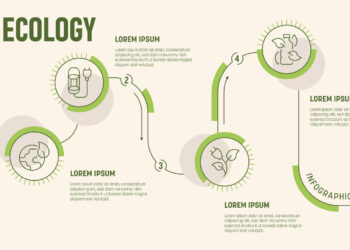
- Image via Wikipedia
Recently, Pew Research published a poll of newspaper and broadcast news editors and executives, finding high levels of pessimism about the future of journalism, especially the viability of journalism when revenues start disappearing.
The concerns are the usual ones — the financial models are changing, there’s less money to cover the news as it’s been done traditionally. The hopes are more interesting — self-sufficient multimedia reporters are doing very good work and allow for more people on the streets, and the value of journalism seems to be high in general, even if business models are struggling to keep up. Best of all, the majority of those surveyed believe journalism’s problems are more about missed opportunities than about technological change, a very realistic view, in my opinion.
Broadcast news editors and executives are much more pessimistic than their print brethren and sistren, which isn’t surprising given the fact that their hegemony over the visual presentation of news is being threatened for the first time by abundant online video, while their notoriously superficial coverage is easier to disrupt than print’s deeper archives and broader (and often deeper) coverage.
Necessity is the mother of invention, and the pressure on news organizations is driving some new attitudes. One executive is quoted as saying:
Our mantra this year is experiment and fail quickly. Don’t be afraid of change and don’t stick with something too long if it doesn’t work.
Attitudes seem to vary with vulnerability. Print outlets appear to be farther along in responding to the digital revolution, and more realistic. In fact, a slight majority of those interviewed believe journalism is headed in the right direction. Broadcast seems newer to the game, and a little more depressed by the changes they’re about to undergo. A full 64% of broadcast executives believe journalism is headed in the wrong direction. Newspapers are farther along experimenting with pay walls and other revenue sources; broadcast is barely starting to think about these things. (Oddly, broadcast executives think their organizations will remain solvent longer than newspaper executives do; this may be because their disruption started later, in which case they’re right, or because they’re just starting to sense the enormity of the changes they’re about to undergo, in which case they’re probably really wrong.)
But there may be a more instinctual attitude that’s holding traditional news outlets back from succeeding in the new media age.
In the section of the Pew report on “Content Management and Display,” one striking response common to both print and broadcast executives is that email is viewed as “essential” by only 33% of respondents, as compared with 41% who view mobile as “essential.”
Email is both a major communication technique for alerts (aka, news) and a major mobile application. It should rank at least as high as mobile, and should be much higher.
Maybe this is indicative of the deeper problem here.
In contrast, Web sites are viewed as the most important element in content display — perhaps because they are an analog of print papers, with layouts, columns, and photos placed just so. Web sites are a package, and news editors and executives are used to selling packages, not interactions or services.
Email is a news service. Missing this crucial insight may be part of the reason why news outlets are struggling.
Twitter and Facebook are rated by the news executives as just slightly less important than email, as well. This is probably another mistaken perception stemming from the same packaging attitude.
Failure to appreciate the modern media landscape and the utility of something like email could reflect a profound level of cluelessness. In the age of hyper-competitive communications, distribution is vital to survival — speed, precision, location, and presence all matter. Email and social media both embrace these attributes.
News organizations should appreciate this, but they may believe that what they’re distributing — a unified 30-minute broadcast or a full slate of yesterday’s news — is more important than granular, targeted, personalized distribution via email and social media.
Boy, do I have news for them . . .
Discussion
4 Thoughts on "Optimism and Pessimism in Journalism: Attitude Reflects Vulnerability, Packaging Seals It"
Mark Cuban makes a strong case for Twitter and Facebook as the destinations for finding information on breaking and recent news. The more widespread exposure provided might explain why they’re valued higher than e-mail, which is more targeted and likely requires the reader to subscribe to updates, rather than actively seeking information on a particular subject.
Somebody said that there is so much information out there today that it is like sipping through a straw at a fire hydrant. I agree that the means of getting journalistic content to the people who want it is changing and you can see it shift almost monthly–websites to targeted email updates to Facebook and Twitter. People want what connects to their unique life and they want it now.
I write op-ed columns for the Ventura County Star but now also make them available nationally on townhall.com. I see the newspapers shrinking and staffs threatened. But the need for information you can trust remains.
I think we will see sites like elance.com form for journalists where projects will be posted and people will compete for the work. The trick is finding professionals you can trust to do the job. Like at elance, there will be ratings and work you can check. It will be less owning staff and more flexible in finding people to fit the need when you need it.
But newspapers still fill a special purpose–shared community and an opportunity to encounter information or events that you wouldn’t seek but happen and can impact you. There will be services form that allow people to purchase broad-spectrum tidbits with links. What are the areas of news that you must keep abreast of or you can be blindsided by information that can effect your life or career. Having the critical news in each of those areas available with a brief tease and link will allow people to get to the news worth reading.
I just wrote a book, “The Optimism Advantage.” That’s why I was drawn to the post. What do we know about optimists? They earn that attitude from a track record of overcoming obstacles. The more they do it, the more optimistic they become. They are realists. Why? They want to know the problems so they can get busy overcoming them and they believe they can. Journalists may be optimistic and not know it. They have to find, pursue and develop stories every day on deadline. They have the track record that should foster optimism.
The need for information we can trust that keeps us informed will remain high. Gaining and keeping trust and being flexible in finding out how to give people what they need and want…. That’s the trick. The good news is we have to invent the future to enjoy it! As for today, I really enjoyed your post!
Thanks for highlighting this study, Kent. fascinating stuff. As a professional journalist, I was more alarmed by the answers to the question about how the Internet is changing the values of the business. All the top answers (loosening standards, overemphasis on speed, more bias and more superficial) were negative and reflected, to my mind, a resistance to new ideas. Meanwhile, almost none selected greater access, interactivity or willingness to let others have a voice.
Also, in re recent posts about walling off content, a majority of folks from the print side thought failure to charge for content initially was the dominant or a major factor in the current problems of the business. But asked what two revenue models they are pursuing most actively, paywalls and seeking fees from search engines were down the list (though would be interesting to know if they are increasing or decreasing in popularity relative to a few years ago) which was topped by display/banner ads, selling non-news products, local search, and niche or micro news.
![Reblog this post [with Zemanta]](http://img.zemanta.com/reblog_e.png?x-id=205062f6-5623-4c4e-a705-3231a49ac992)


